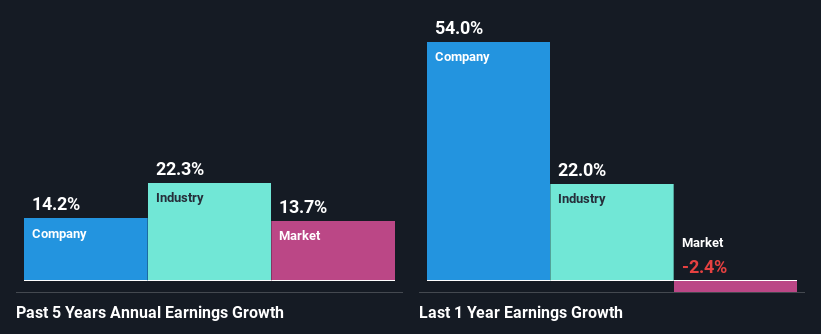Perdoceo Education Corporation's (NASDAQ:PRDO) Fundamentals Look Pretty Strong: Could The Market Be Wrong About The Stock?
With its stock down 4.6% over the past three months, it is easy to disregard Perdoceo Education (NASDAQ:PRDO). However, a closer look at its sound financials might cause you to think again. Given that fundamentals usually drive long-term market outcomes, the company is worth looking at. In this article, we decided to focus on Perdoceo Education's ROE.
Return on equity or ROE is a key measure used to assess how efficiently a company's management is utilizing the company's capital. Put another way, it reveals the company's success at turning shareholder investments into profits.
Check out our latest analysis for Perdoceo Education
How To Calculate Return On Equity?
The formula for return on equity is:
Return on Equity = Net Profit (from continuing operations) ÷ Shareholders' Equity
So, based on the above formula, the ROE for Perdoceo Education is:
18% = US$148m ÷ US$841m (Based on the trailing twelve months to December 2023).
The 'return' is the amount earned after tax over the last twelve months. So, this means that for every $1 of its shareholder's investments, the company generates a profit of $0.18.
What Has ROE Got To Do With Earnings Growth?
We have already established that ROE serves as an efficient profit-generating gauge for a company's future earnings. Depending on how much of these profits the company reinvests or "retains", and how effectively it does so, we are then able to assess a company’s earnings growth potential. Assuming everything else remains unchanged, the higher the ROE and profit retention, the higher the growth rate of a company compared to companies that don't necessarily bear these characteristics.
Perdoceo Education's Earnings Growth And 18% ROE
To start with, Perdoceo Education's ROE looks acceptable. On comparing with the average industry ROE of 12% the company's ROE looks pretty remarkable. This probably laid the ground for Perdoceo Education's moderate 14% net income growth seen over the past five years.
As a next step, we compared Perdoceo Education's net income growth with the industry and were disappointed to see that the company's growth is lower than the industry average growth of 22% in the same period.
The basis for attaching value to a company is, to a great extent, tied to its earnings growth. The investor should try to establish if the expected growth or decline in earnings, whichever the case may be, is priced in. This then helps them determine if the stock is placed for a bright or bleak future. Has the market priced in the future outlook for PRDO? You can find out in our latest intrinsic value infographic research report
Is Perdoceo Education Making Efficient Use Of Its Profits?
In Perdoceo Education's case, its respectable earnings growth can probably be explained by its low three-year median payout ratio of 10% (or a retention ratio of 90%), which suggests that the company is investing most of its profits to grow its business.
While Perdoceo Education has been growing its earnings, it only recently started to pay dividends which likely means that the company decided to impress new and existing shareholders with a dividend.
Conclusion
On the whole, we feel that Perdoceo Education's performance has been quite good. Specifically, we like that the company is reinvesting a huge chunk of its profits at a high rate of return. This of course has caused the company to see a good amount of growth in its earnings. Having said that, the company's earnings growth is expected to slow down, as forecasted in the current analyst estimates. To know more about the company's future earnings growth forecasts take a look at this free report on analyst forecasts for the company to find out more.
Have feedback on this article? Concerned about the content? Get in touch with us directly. Alternatively, email editorial-team (at) simplywallst.com.
This article by Simply Wall St is general in nature. We provide commentary based on historical data and analyst forecasts only using an unbiased methodology and our articles are not intended to be financial advice. It does not constitute a recommendation to buy or sell any stock, and does not take account of your objectives, or your financial situation. We aim to bring you long-term focused analysis driven by fundamental data. Note that our analysis may not factor in the latest price-sensitive company announcements or qualitative material. Simply Wall St has no position in any stocks mentioned.

